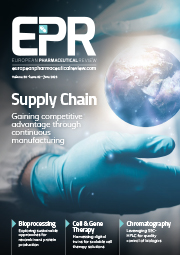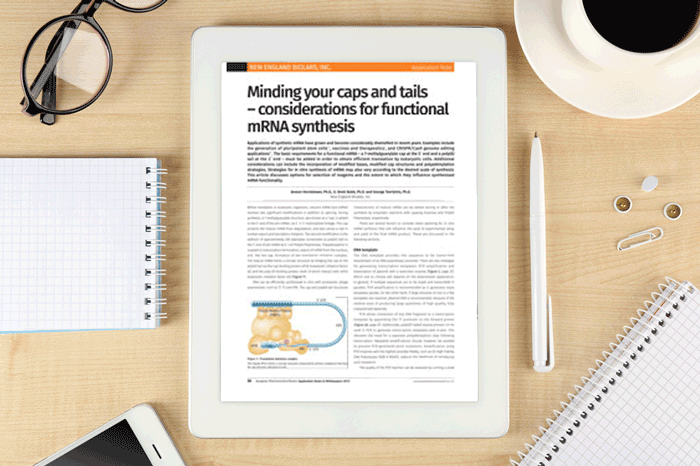Application Note: Minding your caps and tails – considerations for functional mRNA synthesis
Posted: 18 January 2016 | New England BioLabs Inc | No comments yet
This article discusses options for selection of reagents and the extent to which they influence synthesised mRNA functionality…
Applications of synthetic mRNA have grown and become considerably diversified in recent years. Examples include the generation of pluripotent stem cells, vaccines and therapeutics, and CRISPR/Cas9 genome editing applications. The basic requirements for a functional mRNA – a 7-methylguanylate cap at the 5´ end and a poly(A) tail at the 3´ end – must be added in order to obtain efficient translation by eukaryotic cells. Additional considerations can include the incorporation of modified bases, modified cap structures and polyadenylation strategies. Strategies for in vitro synthesis of mRNA may also vary according to the desired scale of synthesis. This article discusses options for selection of reagents and the extent to which they influence functional mRNA synthesis.
Before translation in eukaryotic organisms, nascent mRNA (pre-mRNA) receives two significant modifications in addition to splicing. During synthesis, a 7-methylguanylate structure, also known as a ‘cap’, is added to the 5´ end of the pre-mRNA, via 5´ → 5´ triphosphate linkage. This cap protects the mature mRNA from degradation, and also serves a role in nuclear export and translation initiation. The second modification is the addition of approximately 200 adenylate nucleotides (a poly(A) tail) to the 3´ end of pre-mRNA by E. coli Poly(A) Polymerase. Polyadenylation is coupled to transcription termination, export of mRNA from the nucleus, and, like the cap, formation of the translation initiation complex. The mature mRNA forms a circular structure by bridging the cap to the poly(A) tail via the cap-binding protein eIF4E (eukaryotic initiation factor 4E) and the poly-(A) binding protein, both of which interact with eIF4G (eukaryotic initiation factor 4G).
This application note is restricted - login or subscribe free to access


Why subscribe? Join our growing community of thousands of industry professionals and gain access to:
- bi-monthly issues in print and/or digital format
- case studies, whitepapers, webinars and industry-leading content
- breaking news and features
- our extensive online archive of thousands of articles and years of past issues
- ...And it's all free!
Click here to Subscribe today Login here
Related content from this organisation
- New England Biolabs, Inc.
- New England Biolabs® launches NEBNext Direct™ Technology with Cancer HotSpot Panel
- Application Note: Minding your caps and tails – considerations for functional mRNA synthesis
- Application Notes & Whitepapers supplement 2015
- NEB® launches new NEBNext® Ultra™ II Kit for NGS Library Preparation with as little as 500 pg of input DNA







